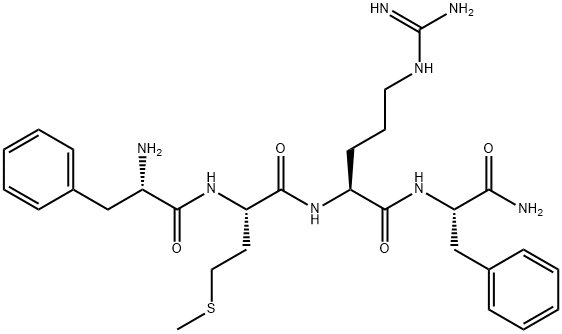Target cells and function The predominant effect of FaRPs is the reduction of spontaneous muscle contractions, such as in the intestinal muscle and the heart rate. Among FaRP subtypes, some FaRPs function in gut contraction and other subtypes do not. Physiological discrimination according to different subtype of FaRPs results in extensive functions.For example, FaRPs exert acceleratory effects on the heart rate, inhibitory effects on gut motility, and modulate synaptic activity. Furthermore, sequential ecdysis behavior is also regulated by FaRPs, consequently activating the downstream of the eclosion hormone (EH) and ecdysistriggering hormone (ETH).During ecdysis, FaRP-expressing Tv neurons are activated by ETH.
Gene, mRNA, and precursor D. melanogaster FMRFa mRNA produces a deduced prepropeptide composed of 347 aa. The prepropeptide is composed of a signal sequence, and 10 copies of FMRFa and extended FaRPs. The mature peptides are processed proteolytically and amidated at each C-terminal of the peptides.

